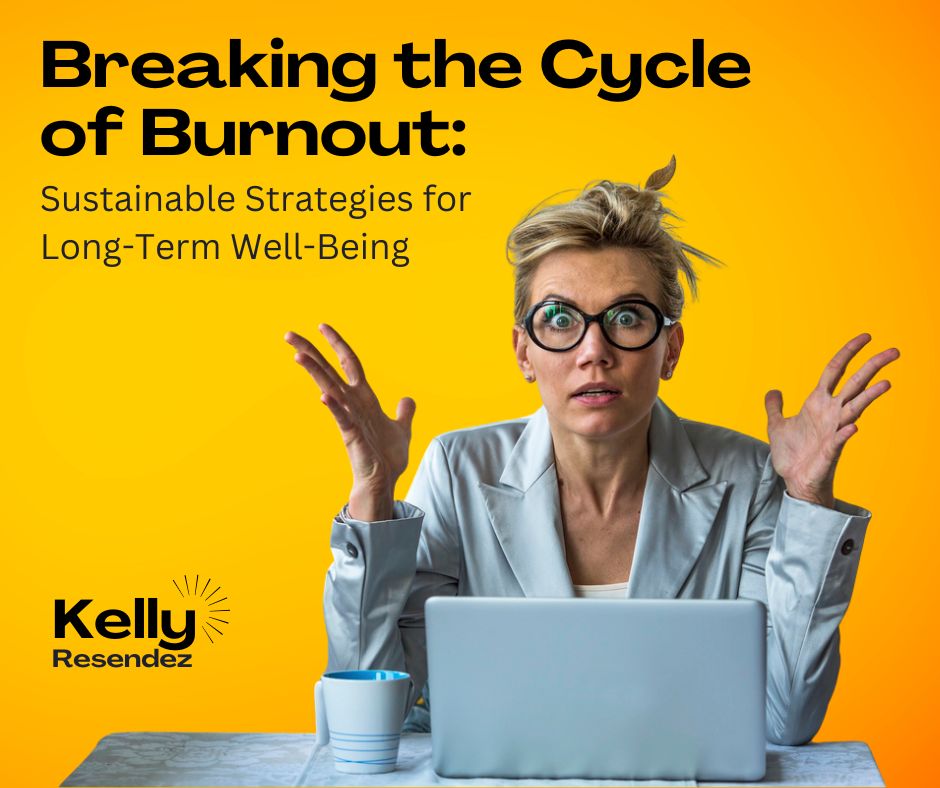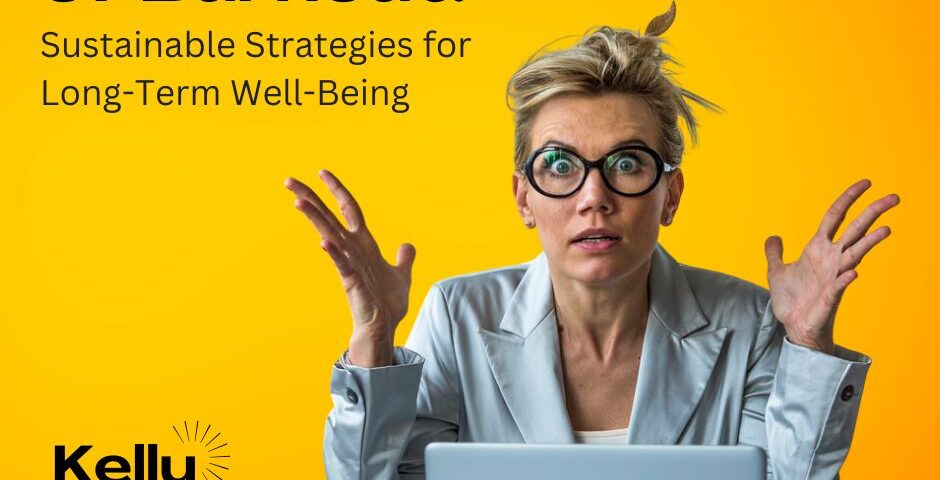
The Power of Vulnerability in Leadership
September 23, 2024
Building Emotional Resilience in the Face of Change
December 2, 2024
As leaders, we often find ourselves pouring into others. Whether at work, in our community, or even within our own households, our teams, families, and friends often get our endless attention and care, leaving little time or energy for us to refill our own cups.
While this can seem like a badge of honor in our fast-paced, achievement-driven society, the truth is that it often leads us down a dangerous path: burnout.
What is Burnout?
Burnout is a state of chronic physical and emotional exhaustion (sound familiar?!), often bringing feelings of cynicism, detachment, and a reduced sense of accomplishment. According to a 2023 HR Trends report, 65% of employees polled said they experienced burnout the previous year, while 72% said it significantly impacted their performance.
In fact, the World Health Organization (WHO) has classified burnout as an “occupational phenomenon,” defining it as a syndrome caused by unmanaged workplace stress. But burnout isn’t limited to the workplace. It can manifest in any leadership role, whether you’re running a business, leading a family, or spearheading community initiatives.
Burnout doesn’t just affect our productivity at work; it has a profound impact on our mental health, relationships, and overall well-being. Point blank, burnout keeps us from feeling fulfilled and enjoying the journey in our work-a-day lives.
The Impact of Burnout on Mental Health
The consequences of burnout extend beyond fatigue. It erodes mental health, leading to anxiety, depression, and feelings of helplessness. A study published in the Journal of Occupational Health Psychology found that burnout is strongly linked to the development of depressive symptoms and anxiety disorders.
To make matters worse, leaders and entrepreneurs often feel isolated, thinking they must shoulder these burdens alone, which only exacerbates the issue. We often feel reticent or even ashamed to admit “weakness” by saying we’re over-tired, over-stressed, or burnt out and need help.
When we ignore the signs of burnout, we not only risk our health but also the well-being of those around us. Burnout affects decision-making, creativity, and our ability to empathize and connect with others—all of which are crucial leadership skills.
Signs of Burnout
It’s critical to recognize the warning signs early to prevent burnout from taking root.
Some common signs include:
– Physical Exhaustion: Constant fatigue, frequent minor illness, or difficulty sleeping.
– Emotional Exhaustion: Feeling overwhelmed, detached, or unable to focus on the things that once brought joy.
– Cynicism and Detachment: Increasing negativity, irritability, or feelings of disconnection from others.
– Reduced Sense of Accomplishment: Feeling ineffective, unproductive, or questioning your purpose.
Breaking the Cycle: Sustainable Strategies
Preventing burnout requires more than just taking a vacation or cutting back on work hours. Taking an extra day off usually won’t solve the problem. Instead, it’s about creating sustainable habits that promote long-term well-being.
Here are some strategies leaders and entrepreneurs can adopt to break the cycle:
1. Prioritize Work-Life Balance
Work-life balance isn’t about evenly distributing your time between work and personal life every day. It’s about setting boundaries and being intentional about how you spend your energy. Leaders often blur the lines between work and personal life, especially when you’re passionate about your mission. But without boundaries, work, errands, and tasks for others can consume you.
– Set Clear Boundaries: Determine work hours and also when those hours are over. Schedule time for yourself to do those things that recharge you batteries such as hobbies, passions, self-care, and exercise.
– Delegate: As leaders, we often feel we have to do it all. Delegating tasks not only empowers your team but also lightens your load and gives you space to focus on what truly matters.
– Flexible Work Models: Embrace flexible schedules or remote work options to create more time for self-care and family, especially if you’re leading a team. The goal is results, not the endless grind!
2. Commit to Self-Care
Self-care is not indulgent; it’s essential. And yet, many leaders push it to the bottom of their to-do list. Self-care practices replenish your physical, mental, and emotional energy, preventing the depletion that leads to burnout. Try to follow the code that you at least take care of yourself as well as you do others!
– Mindfulness and Meditation: Research from The American Psychological Association shows that mindfulness practices, such as meditation, reduce stress and anxiety while increasing focus and emotional regulation. Even just ten minutes a day of slowing down to breathe deeply can make a difference.
– Physical Activity: Regular exercise boosts endorphins and reduces cortisol, a stress hormone. Whether it’s a yoga class, a walk outside in nature, or strength training, find what works for you and make it part of your routine.
– Sleep Hygiene: Prioritize sleep. Chronic sleep deprivation is one of the biggest contributors to burnout, as it weakens resilience and decision-making ability. Sleep is SO critically important in our health and well-being, so turn off the Netflix and put down the phone well before bed!
3. Cultivate a Support System
Isolation is a key contributor to burnout. Leaders often feel like they have to bear the weight of responsibility alone, but in reality, a strong support network can help alleviate stress and offer perspective.
– Mentorship and Peer Groups: Join leadership groups or peer networks like GoBundance Women, where you can connect with other high-achieving women who understand the unique pressures you face. Sharing your challenges with others who have walked a similar path can lighten the load.
– Professional Help: Don’t hesitate to reach our for help and professional support, whether through coaching, therapy, or consulting. Sometimes, an outside perspective is necessary to navigate challenges and set up systems that prevent burnout.
One of the absolutely best support systems you’ll find is GoBundance Women, an exclusive membership community of executives, entrepreneurs and investors. We support each other and keep everyone accountable for every aspect of their lives!
Being a part of our circle provides members the tools, mentorship and community needed to achieve their goals, attaining higher levels of success and creating a full, abundant life that they love to live!
To find out more, visit our website.
4. Redefine Success
Many leaders equate success with hard work, hustle, and endless to-do lists. But true success comes from living a balanced, purpose-driven life. Redefine success on your terms, aligning your work with your values and goals.
– Reflect on Purpose: Take time regularly to reflect on why you do what you do. Reconnecting with your purpose can reignite your passion and give you clarity on what to prioritize.
– Celebrate Small Wins: Leaders are often focused on the next big goal, rarely taking time to celebrate the wins along the way. Celebrate progress, not just the end result.
Conclusion
Breaking the cycle of burnout requires a conscious, ongoing commitment to well-being. As leaders, entrepreneurs, and even great spouses or parents, we set the tone for those around us. By modeling sustainable work-life balance and self-care, we not only protect our own mental health but also create healthier, more resilient communities, organizations, and families.
Remember, when you feel better, clear-of-purpose, and less burnt out, you have even more to give the world! So, let’s commit to prioritizing our well-being—not just for ourselves but for those who depend on us day-in and day-out.
Your friend,
– Kelly Resendez
P.S.
If you’re interested in finding out more about GoBundance Women and how it can change your life in many ways, just click here!
***
Sources:
– Gallup. (2019). Employee Burnout: Causes and Cures.
– American Psychological Association. (2021). The Science of Mindfulness.
– World Health Organization. (2019). Burnout as an Occupational Phenomenon: International Classification of Diseases (ICD-11).
– Maslach, C., & Leiter, M. P. (2016). Burnout: A Brief History and How to Prevent It.
– Uncovering the Significant HR Trends of 2024 to Maximize Your Next- Best Step



